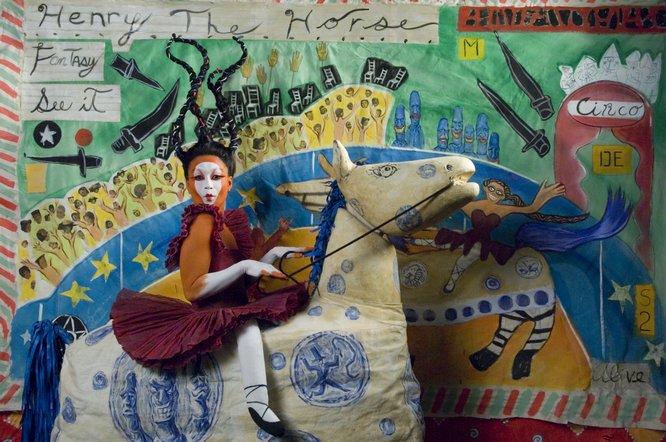While the little tempest in a comments stream over the use of source materials was raging, or at least microraging, in reaction to David Giannini’s redeployment of other poet’s first lines, I went to see a film that raised some of the same issues, Julie Taymor’s Across the Universe, a musical tale of love in the 1960s set entirely to songs written (but not here performed) by the Beatles. As an attempt to reinvent the musical for our time, it’s basically Hair with better music as one droll critic put it, a shadow of a film alongside John Carney’s brilliant Once. It certainly is the most political film I ever saw where the audience was required to check its left brain at the door. If you can do that, it’s a visually stunning & often quite wry music video that trots through its paint-by-numbers narrative of the love between Jude & Lucy, Maxwell’s unfortunate adventure in
By pinning so much of its narrative to actual events of the period – Kerouac is mentioned by name, Jo-Jo is propelled to leave Detroit after the riots there & the student radicals blow themselves up in a New York brownstone turned bomb factory a la the Weather Underground, before the final triumph of the heroes’ performance atop a New York City roof – Across the Universe (the title of a Beatles song that has grown in importance in its role in their canon, thanks largely to Rufus Wainwright) seems almost anxious about its sources. Source anxiety is, I think, an interesting, if curious, phenomenon. Giannini criticized my review in part because I omitted quoting his two-paragraph prefatory note with its obligatory
All quotations used in this work fall under the ‘fair use’ convention, but remain the copyright of the individual authors…. A specific intention is to honor individual poets in new community. (Ital. in the original)
Lately, I’ve been seeing source commentary in a lot of books of poems & not always where I would think to find it – Jean Day’s Enthusiasm: Odes & Otium is one such, Laynie Browne’s Daily Sonnets is another. Giannini lists all of his sources & one of the games you can play with his book is “guess where that came from.” And, at the behest of my editors, even The Alphabet will include a few terse notes, albeit mostly having to do with the dates of composition. Still, I had to track down in
But asking for source data on a 900 page manuscript like The Alphabet is not so far from inviting a 2,000 page response. I suppose some day some enterprising grad student is going to comb through Ketjak and identify just how many sentences there were lifted directly from Quine – it could be done. But I’m not in the slightest inclined to think that doing so would tell you any more about the poem. In that same vein, the various annotations for works like Ulysses, The Cantos or Finnegans Wake always strike me as telling me a little about what the author may have been thinking about around the time of composition, but they are almost mute on what the works themselves actually say. Annotating, reading & interpreting are, after all, three different acts. Everyone who has ever written about 2197 has done so with a sense of a science fiction framework & what that might mean to those texts. I can’t think of anyone who has as yet noticed that the number is 13 cubed, which means that it represents the total of sentences in the work. From the perspective of reading, does that matter? I suspect not.






